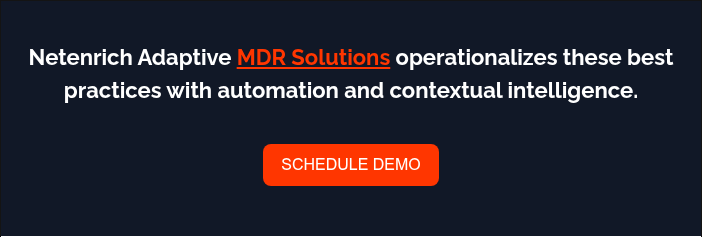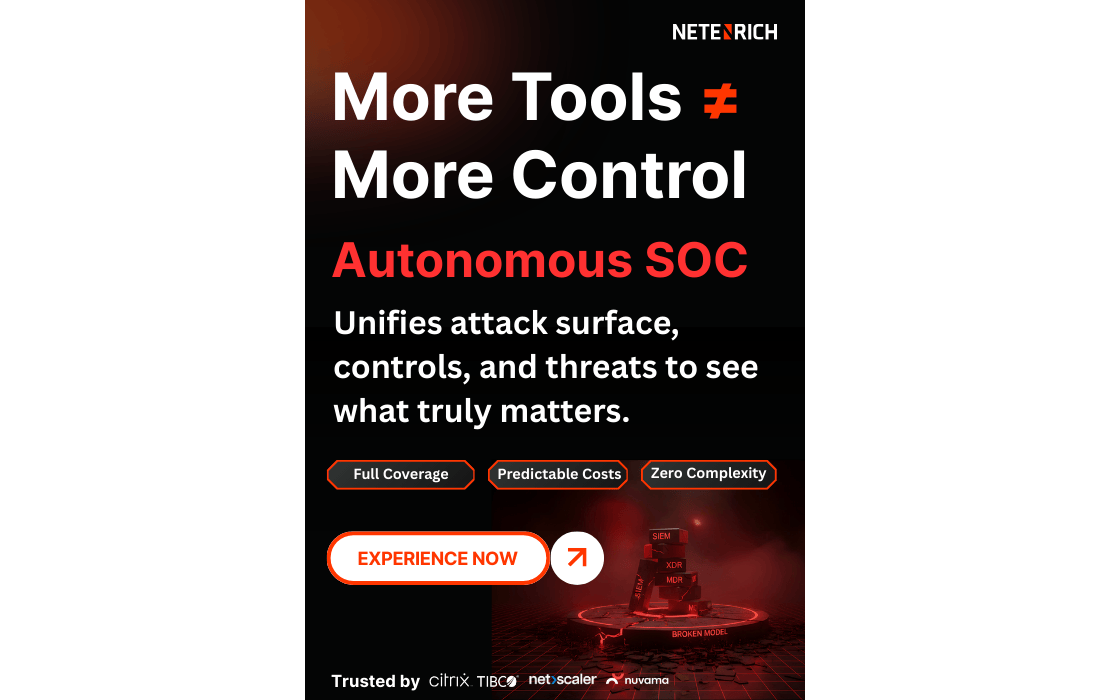Incident Response Methodology: Engineering-led Approach
Published on August 22, 2025 | Last updated on December 18, 2025 | 5 min read

Table Of Content
Key Takeaways
- Most incident response plans fail due to fragmented processes and siloed data.
- Aligning detection, context, and response reduces dwell time and business risk.
- An engineering-led methodology shifts response from manual, reactive steps to scalable, intelligent workflows.
- The outcome: faster containment, lower breach costs, and continuous resilience.
What is Incident Response Methodology?
Incident response methodology is the structured process organizations use to prepare for, detect, contain, and recover from cyber incidents. It includes phases such as preparation, identification, analysis, containment, eradication, recovery, and lessons learned. A clear methodology ensures faster decision-making, minimizes damage, and strengthens organizational resilience.
Why Incident Response Matters in Cybersecurity?
In 2024, IBM’s Data Breach Report found that the average cost of a data breach rose to $4.88 million, marking a 10% increase from the previous year. With 83% of organizations experiencing multiple breaches, the importance of a tested incident response methodology is clear.
Security leaders face three realities:
- Threats are increasing in speed and sophistication.
- Detection and response gaps expose critical systems.
- Traditional, reactive methods cannot scale to modern risks
Traditional Incident Response Challenges
In cybersecurity, incident response methodology includes processes and technologies for detecting security breaches and taking steps to contain and recover from them while protecting business operations and data integrity.
However, traditional incident response methods are subject to several challenges, which include:
- Reactive vs proactive measures
- Rising volume and complexity of threats
- Lack of contextual awareness
- Uncoordinated, siloed response
Reactive vs. Proactive Measures
The traditional incident response often relies on a reactive approach, which involves fortifying defenses against known cyberattacks and actively tracking down intruders who may have breached the network. Traditional security measures prioritize defensive barriers - firewalls, antivirus software, and spam filters - meant to detect and block threats at the perimeter. What about the unknown attacks lurking around?
Reactive measures fail against:
- Advanced Persistent Threats (APTs) that stealthily infiltrate networks.
- Zero-day vulnerabilities that evade signature-based detection.
- Social engineering attacks that bypass technical controls altogether.
On the other hand, proactive measures that focus on identifying and addressing potential weak spots in the network include:
- Threat hunting Proactively searching for signs of malicious activity within the network.
- Ethical hacking. Employing white-hat hackers to identify and rectify security weaknesses.
- Proactive network and endpoint monitoring for unusual or suspicious activity.
- Staff training by providing comprehensive cybersecurity training for employees.
Rising Volume and Complexity of Threats
According to recent data, 2023 saw the highest number of zero-day exploits, where 97 vulnerabilities were exploited before patches became available.*
Traditional security methods based on known signatures and patterns frequently fail to detect and prevent advanced threats. They often generate false positives, resulting in unnecessary disruptions and wasting time on alerts that are not necessarily critical to business. They may also fail to detect breaches, leaving organizations vulnerable to cyber attacks.
According to reports, organizations take an average of 277 days to identify data breaches.* This is too long.
The frequency of sophisticated attacks, such as advanced persistent threats (APTs) and zero-day exploits, is also rising. The number of APTs increased by 40% in 2023 compared to the previous year.
"We're dealing with threats that evolve faster than human teams can process.”
Netenrich CXO Roundtable, August 2024
Lack of Contextual Awareness
Traditional incident response lacks the contextual awareness necessary for effective decision-making. As a CISO explained at our recent roundtable, “Without context, stitching signals into meaningful situations delays response times and causes confusion."
The consequences of missing business-critical context include:
- Misallocated resources, focusing on low-priority alerts while missing critical threats
- Delayed response times, increasing the potential for lateral movement.
- Increased compliance risks and regulatory violations.
- Reputational damage due to delayed or inadequate responses.
Uncoordinated, Siloed Response
In traditional incident response, cross-functional localized teams would determine the issue. Staff would then have to shift their priorities and focus on solving the problem, which would most impact developers.
The process was unstructured, and resulted in:
- A duplication of efforts across IT, SOC, and security teams.
- A lack of standardized playbooks for consistent remediation.
- A reactive mentality focused solely on restoring operations rather than preventing recurrence.
The aim of recovery was to get the system up and running, but nothing much followed.
Engineering-led Incident Response Methodology
An engineering-driven methodology is the future of incident response in cybersecurity because it addresses the growing complexity, scale, and speed of modern threats. This approach shifts the focus from reactive, ad-hoc processes to proactive, automated, and context-aware systems that leverage engineering principles for precision and scalability.
Why an Engineering-Driven Methodology is the Future
1. Scalability and Automation
Traditional methods cannot keep pace with the sheer volume and sophistication of cyber threats. An engineering-driven approach integrates automation and machine learning to process high alert volumes, reducing manual effort and enabling faster responses.
- With automated alert triage, machine learning processes can quickly classify and rank alerts, thereby reducing the time spent on manual sorting. For instance, we helped a large software company automate triage, reducing the average time to retort (MTTR) by 60%*.
- By orchestrating Response Workflow, predefined and automated workflows can initiate response behavior when a threat is detected. By applying an automated response playbook, organizations can reduce the average time they respond to incidents from intervals to minutes.
- Quick Information Linking Automated structures can instantly correlate facts from a wide range of sources, providing background that takes a human analyst significantly longer to process. By implementing a data-driven relationship engine, we helped a large, global business decrease time spent on threat investigation by 75%*.
This is especially significant as staffing shortages continue to hamper incident response. Engineering-led systems can scale alongside the increasing cyber-attacks, ensuring organizations remain resilient.
2. Proactive Threat Management
Proactive measures such as predictive analytics and preemptive defense mechanisms anticipate potential vulnerabilities and simulate attack scenarios, organizations can strengthen their defenses before breaches happen.
3. Contextual Awareness
Engineering-driven methodologies prioritize contextual understanding. First, these are tailored to an organization’s unique business priorities and risk objectives. This business-critical information is fed into incident response workflows. By embedding context into engineered solutions, teams create a threat informed defense posture and, as a result, make faster, relevant and more informed decisions.
4. Cross-Team Collaboration
Fragmented tools and siloed teams often hinder traditional incident response efforts. An engineering-driven approach unifies tools and workflows across departments through configurable systems that route incidents to the appropriate teams, eliminating miscommunication delays and ensuring efficient resolutions.
For example, a SOC analyst investigating an alert initially viewed it in isolation. However, through cross-team collaboration, the security team realized that the affected systems were part of a payment gateway. This contextual insight changed the incident priority, ensuring faster response and preventing potential financial disruption.
5. Precision Through Data-Driven Insights
Data-driven insights result in data-driven decision-making, helping identify trends, predict outcomes, and make informed choices based on evidence rather than assumptions. By continuously analyzing past incidents, organizations continue to fine-tune response strategies for a fortified security posture.
Security Incident Response Best Practices
- Automate enrichment, correlation, and escalation.
- Run red team and tabletop exercises quarterly.
- Maintain playbooks aligned to business risk.
- Train employees on phishing and social engineering.
- Integrate monitoring and detection for unified visibility.
Steps to Build a Modern Incident Response Framework
In incident management, every second counts. Engineering-led response ensures faster damage control, smarter decision-making, and resilience at scale. Here is how to make the shift:
-
Invest in Automation
Organizations should implement Security Orchestration, Automation, and Response (SOAR) platforms to automate repetitive tasks such as alert triage and threat hunting. -
Develop Context-Aware Systems
Build systems that integrate asset management data with incident response workflows. For example, critical business systems (e.g., payment gateways) can be mapped to their underlying infrastructure so SOC analysts can prioritize incidents based on business impact. -
Adopt Agile Engineering Practices
Create cross-functional teams to design and refine response processes. This will enable collaboration among engineers, analysts, and stakeholders. -
Enable Continuous Monitoring and Feedback Loops
Provide real-time visibility into threats by implementing continuous monitoring tools. -
Upskill Teams in Engineering Principles
To bridge the gap between traditional SOC roles and engineering expertise, train security teams in engineering concepts such as system design, automation scripting, and data analysis. -
Unify Tools Through Integration
Consolidate disparate security tools into a cohesive ecosystem through APIs and integrations. This reduces fragmentation and ensures a seamless flow of information across teams.
Take the first step today
Every breach is a lesson - but the most innovative teams act before the next one hits. Work with cybersecurity partners and solution providers specializing in engineering-driven incident response to strengthen your defenses before it’s too late.
- Assess your current incident response capabilities against the principles outlined here.
- Identify the most significant gaps in your organization's security posture.
- Develop a roadmap focused on long-term resilience and business value.
- Partner with Netenrich to implement automated, context-driven incident response strategies tailored to your industry and security needs.
Our team of experts can guide you on the best approach.
Talk to our expertsBecause the future of incident response isn’t reactive - it’s built, iterated, and engineered for resilience.
FAQs
1.What is incident response?
Incident response is the process of identifying, containing, and recovering from cyberattacks to minimize damage and restore operations.
2.Why is incident response methodology critical for CISOs?
Incident response methodology helps CISOs cut breach costs, reduce dwell time, and protect critical business operations from disruption.
3.What are the phases of incident response methodology?
The phases are preparation, detection, containment, eradication, recovery, and lessons learned.
4. What are incident response methodology best practices?
Best practices include automation, contextual intelligence, playbooks, cross-team collaboration, and continuous testing.
*Sources:
Related Articles
Subscribe for updates
The best source of information for Security, Networks, Cloud, and ITOps best practices. Join us.








